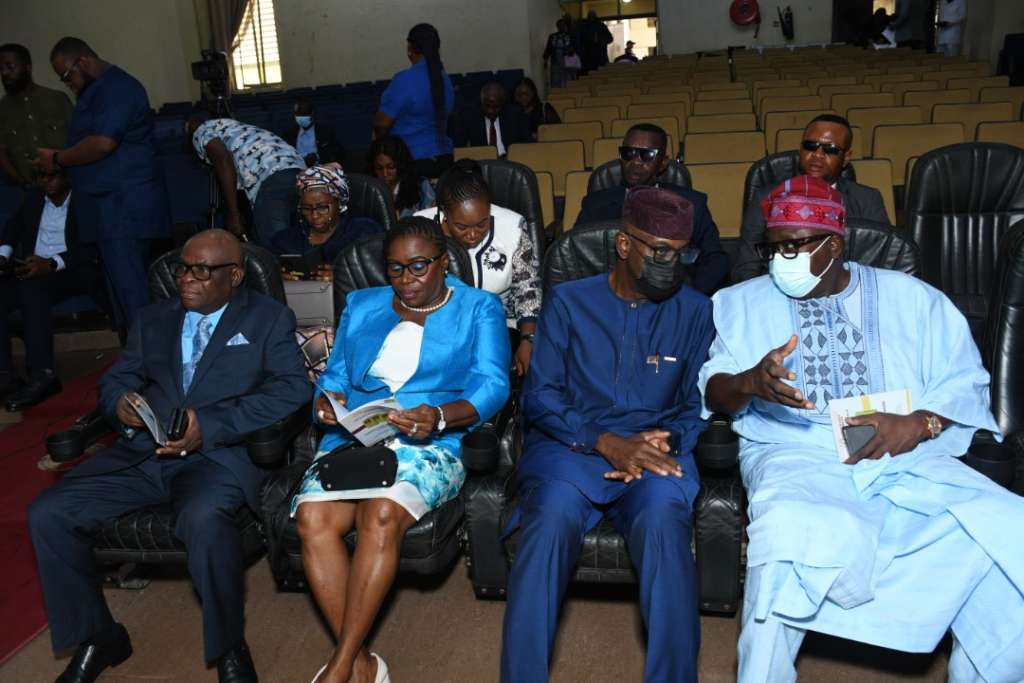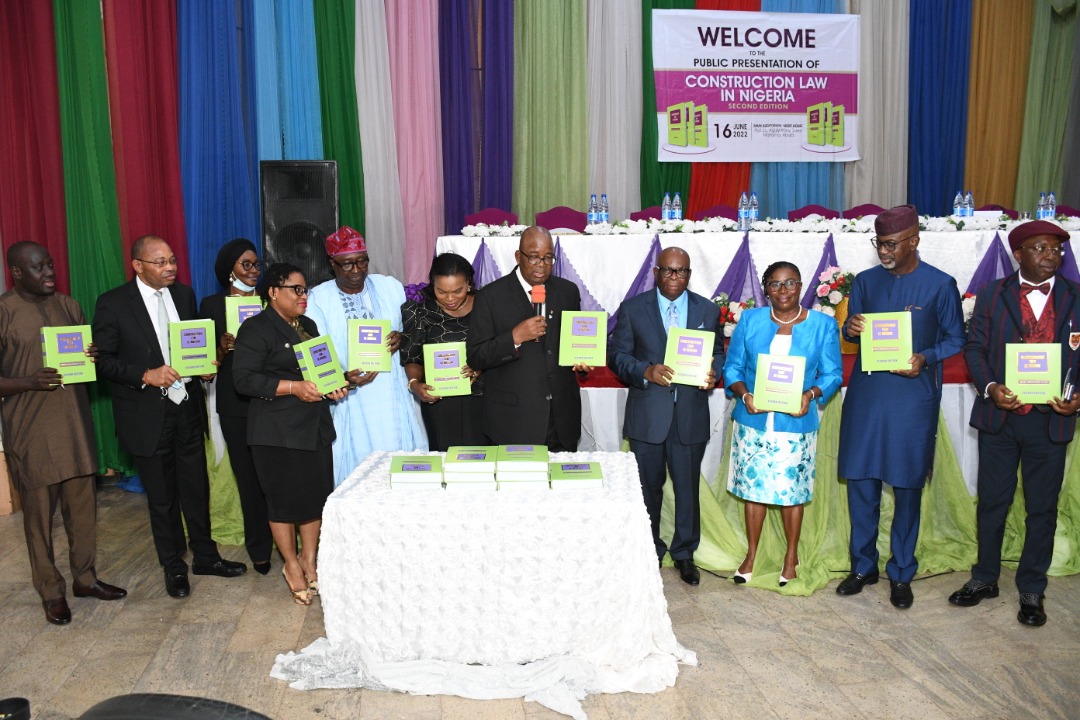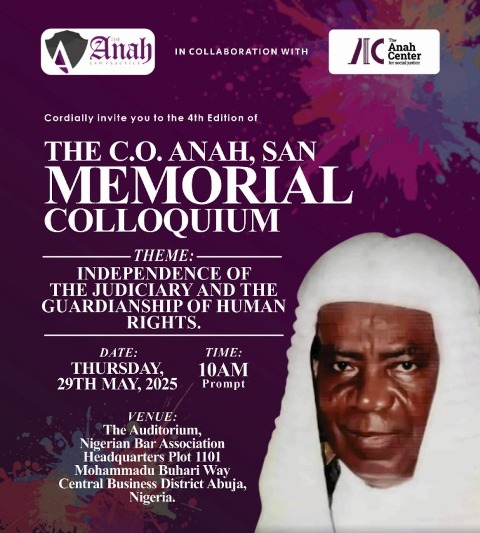Reviewed by Prof. Andrew I. Chukwuemerie, SAN, FCIArb (UK), FICIArb
This book, Construction Law in Nigeria is, to the best of my knowledge, obviously the first book on construction law in the country; an area not yet dwelt on any other author in the country. It is an 11 chapter book. By way of introduction, I found while reading through the book that it is written in very readable language.
The book has the traditional commencement pages that deal with a Preface, Dedication, Acknowledgement, Table of Statues and Table of Abbreviations. In the dummy used to do this review, these pages are all numbered together with the main copies of the book but one believes the final copy of the book will have Roman figure numbering.
Chapter One is on the Brief History of Construction Law and an Overview of the Nigerian Construction Industry. This begins at page 21 with a tracing of the development of construction law to Babylon. The development of the law was traced from the Codes of Hammurabi which were 282, from 228 to 233. These codes were developments on the primitive times when man dwelt in caves “cut through the bush on beaten tracks and walked across rivers on wooden logs placed on riverbanks”.
The author states that the organized construction industry started in Nigeria in the 1940s with a few foreign companies. It experienced a boom in the 1970s when the government was able to undertake several projects thereby enhancing the growth and relevance of the construction industry. Same was the case in about 1991 when the Federal Capital territory was established and the several construction projects which the Federal Government embarked upon as a result. The construction industry in Nigeria can be divided into three sections namely, Construction of buildings by building contractors; Heavy and civil engineering construction contractors and Specialty trade contractors who operate in such areas as carpentry, plumbing etc. In these three categories five characteristics can be seen as stated in pages 24 – 25 of the book.
The challenges facing the industry are outlined and discussed at page 25 and the institutions that regulate different aspects of the sector are listed and discussed at pp. 25 – 26.
Chapter Two deals with the Sources of Construction Law in Nigeria and deals with Nigerian Legislation, Case Law and the received English law as the three sources of law. Clearly legislation constitutes the greatest source of construction law in the country with such prime sources as the 1999 Constitution as amended; the Land Use Act, Cap L5, LFN, 2004; the Nigerian Urban and Regional Planning Act, 1992; the establishment Acts of such professional bodies as the Engineers (Registration, etc) Act and the Architects (Registration, etc) Act; the National Environmental Standards and Regulations Enforcement Agency (NESREA) Act, 2007; Environmental Impact Assessment Act, 1992; the Infrastructure Concession Regulatory Commission (Establishment, etc) Act, 2005; the Public Procurement Act, 2007 and Bills the enactment of which are being awaited such as the Nigerian Construction Industry Content Development Bill and the National Building Code, 2006.
Reading through the chapter and in deed through the book affords a reader a very useful knowledge and understanding of those statutes. The reader will see, for instance, that the Nigerian Urban and Regional Planning Act, 1992 was aimed at introducing a sustainable utilization of the country’s land mass for the insurance and preservation of physical development of every part of Nigeria. Whether or not that has been achieved remains largely debatable. The reader will see, for instance, that the National Building Code “applies to and controls all matters concerning the design and specification, costing, construction, alteration, addition to, moving. Demolition, location, repair and use of any building, structure, or proposed building works in Nigeria”. If this is so and there still occurs in Nigeria the series of collapsed buildings, then one cannot but wonder what the matter is. Are the provisions of the Code not being observed? Put in another way, are they observed in breach? Are the provisions being enforced at all? The fact that the National Building Code (Enforcement) Bill, 2008 has been in the works eversince its preparation can only attest to the slow pace of legislative interventions (or indeed inaction) in areas of critical need in national life. At pp. 36 37 the book discusses the very important provisions which the country has not been able to utilize since the Bills has not been passed.
Chapter Three is on the Context of a Construction Project. It makes a very good reading indeed of the context of a construction project. It starts with a definition of “building operations” as contained in s. 88 of the Factories Act and s. 105 of UK’s Housing Grants, Construction and Regeneration Act, 1996. It treats the life cycle of a construction project, the nine main stages of a construction project and the eight stages into which the UK RIBA Plan of Work Overview, 2020 divides it. The nine stages in the lifecycle of a construction project (Conception of the Project Idea; Feasibility Studies; Brief; Scheme Design; Production Information; Tendering; Construction; Post-Construction Stage and End of Life) are examined in detail at pp. 123 to 134. The roles of key players in a construction project like the employer, land surveyor, the architect, the contractor, the project manager, the quantity surveyor, the clerk of Works, the BIM Manager and the Subcontractors and suppliers are examined in very helpful detail with the help of statutory and case law authorities.
A consideration of that which attracts lawyers, on of payment, follows; an examination of clause 18.1 of the GCC. This immediately involves UK Part II, HGCRA. 1996 and Part 8 of the Local Democratic, Economic Development and Construction Act, 2009 (LDEDC) Act because of a non-existent of a similar payment terms in Nigeria. Clause 2.4.of the 2017 FIDIC Red Book are examined and then Advance Payments, Retention, Adjustment of the Contract Price, Bonuses, Late Payment and the ever present contention in the Courts on payment on interest when that arises are equally treated. The cases of Diamond Bank Ltd v. PIC Ltd (2009) 18 NWLR (Pt. 1172) 67, 96H – 97B follow with legal rule that interest is not payable on a debt or a laon in the absence of express agreement or some course of dealing or custom to that effect which was modified by the Supreme Court in NPA v. Aminu Ibrahim & Co (2018) 12 NWLR (Pt. 1632) 62, 87F – 88D that even when an express agreement is not in existence but such interest naturally flows from the failure or refusal to pay the amount involved over a long period of time thereby depriving a party from the use of and, or enjoyment of the sum. See also Adeyemi v. Lan and Baker Nig. Ltd (2007) 7 NWLR (Pt. 663) 33, 48D – E. A contractor being owed under the SFBCN, 1990 can, therefore proceed under the rule formulated quite clearly in NPA v. Aminu Ibrahim & Coclaim interest for such sum being paid later.
Such other things of interest like the Architect who is referred to as an engineer in some standard form contract is considered in an appreciable detail with Nigerian Supreme Court decisions and those of other countries. In fact, the detailed treatment of the identified sub-topics and issues make the readership of the level an indisputable necessity for anyone who wants to make or continue a career in the construction industry in Nigeria and beyond.
Chapter 4 deals with the main subject of the book, Construction Contracts in Nigeria. In stressing the fact that the relationship of the players in the industry is mainly one of contract, the chapter opens with the assertion, amongst others, that “construction contract” is more comprehensive than “building contract”. The chapter examines the types of contract (written or parol), ingredients or elements (agreement, contractual intention, consideration and the capacity to make the contract) and the remedies open to an aggrieved party in the event of a breach are properly examined with commendable thoroughness. In dealing with damages, for instance, the notorious judicial formulations in cases like Prime Merchant Bank v. Man-Mountain Co (2000) 6 NWLR (Pt. 661) 524, 530, Omonuwa v. Wahabi (1976) 10 NSCC 233, 237 as well as the views of other notable authors like Hudson’s Building and Engineering Contracts 9th ed., 450 and Keating, Law and Practice of Building Contracts, 3rd ed., 158 – 159 were referred to relied on.
The fact that there are two types of Forms of Construction Contract, a contract for works and a contract for the provision of consultancy services was ably examined. Then the types of construction contracts: lump sum contract for a fixed price no matter what happens later in the market; cost reimbursement contract; cost-plus with a guarantee maximum price; measurement contract and Framework Agreements (FA). Then the beauty of standard form contracts, which is very well respected in the construction industry worldwide. The danger of making non-thorough or well thought modifications were sufficiently indicated. Such was the case in Balfour Beatty Regional Construction Ltd v. Grove Developments Ltd (2016) EWCA Civ. 890. The law applies its principle of contra proferentem when interpreting such modifications or changes to the standard form contract against the modifier.
The different kinds of standard form contracts used in the industry were now discussed in detail from pp. 256 – 289. The General Conditions of Contract for the Procurement of Works, 2011 (the GCC) was treated between pp. 256 – 257; the Standard Form of Building Contract in Nigeria, 1990 (SFBCN) was treated with its 35 clauses (clause 35 on Arbitration) and three Appendixes between pp. 258 – 259; the JCT Standard Form of Contract (with Quantities), 2016 Edition (the JCT 16 SBC/Q) pp. 259 – 261; the Federal Ministry of Works Standard Conditions of Contract (Roadworks), 1999 (FMOWC) pp. 261 – 263; the popular FIDIC Conditions of Contract for Construction for Building and Engineering Works Designed by the Employer, 2017 Edition (the 2017 FIDIC Red Book) with its 21 clauses and one Appendix framed by the International Federation of Consulting Engineers).
The different construction contract documents are discussed as from page 266 of the book. The Supreme Court has admirably put a seal on the issue in Compt. Comm. & Ind. Ltd v. OGSWC (2002) 9 NWLR (Pt. 773) 629, 656H by stating in a judgement that upheld the High Court and the Court of Appeal judgements which all upheld the award made earlier in the matter, that “when a contract is reduced to the form of documents, the documents incorporated cease to be extrinsic to the main document but fall to be construed as part of it”. The importance of the letters of intent and the status of letters of award in the industry are also treated with some admiration. The author finds upon a review of Nigerian and foreign cases that letters of intent at the end of the day tend to create binding contracts as they are seen as commercial agreements upon which a presumption can be based that they envince an intention to create legal relations. Thus in Ebla Construction Ltd v. Costain (West Africa) Plc (2011) 6 NWLR (Pt. 1242) 110; Tesco Stores Ltd v. Costain Construction Ltd (2003) EWHC 1487 (TCC) the Courts held without any equivocation that there were binding contracts in the clear facts of those cases without clear award letters. Several other cases and analysis are also contained in that part of the chapter. A reading is advised for those involved in or willing to attempt a career in the building industry or to resolve dispute therein.
Chapter Six deals with the Law of Torts and the Construction Process. It makes a good reading for the interesting intersection of the law of contract and the law of torts, which even a general practitioner and much more a specialist in this area must not only read but keep as a reference book. It treats preliminary issues with such cases as Makwe v. Nwufor (2001) 14 NWLR (Pt. 733) 356, 373A – B and the Limitation Act. It then addresses the tort of Negligence, Tort of Inducing Breach of Contract, Nuisance and Remedies for Tort – Injunction and Damages.
Chapter Seven deals with Digital Construction and the Law in Nigeria. The beauty and necessity of information technology in life generally and in the construction industry is stressed in this chapter. It continues with the Technological Advantages in the Industry. It enumerates the advantages which are so obvious now in the society that there is no need to reproduce them here. The chapter continues with Building Information Modelling (BIM) a more strange thing than the conventional things that are known amongst the uninitiate. BIM is described by the author as “a graphical and digital representation of the structure to be construted.”
The chapter continues with BIM Terminologies, BIM Execution Plan, the Construction Industry Council (CIC) BIM Protocol, Second Edition, 2018 (the CIC BIM Protocol). The Protocol is a standard for use in projects using BIM. The chapter treats other important things around the BIM such as the Legal considerations on the use of BIM in the construction process, Smart Contracts and Blockchain Technology in the Construction industry etc. These things need to be known and the only way to know them is to buy a copy of the book. It runs from p. 430 – 575.
Chapter Eight is on Claims in the Nigerian Construction Industry and Legal Issues that Arise Therefrom. It treats Claims, Delay and Disruption Claims. It specifically treats Loss and Expense Claims, Claim for Loss of Profit, Global Claims, Claims for Liquidated and Ascertained Damages (LADs), Claims for Defects.
Other aspects of the law connected with these things can claims in the construction industry are treated with admirable ease and details.
Chapter Nine is titled Insurance and the Use of Warranties, Bonds, and Guarantees in Construction Projects. In this chapter the treats the relevance of insurance to the construction industry treating such cases as British India Gen. Insurance (Nig) Ltd v. Thawardas (1978) 3 SC 143. Insurance in Construction Projects, the Use of Warranties in the Nigerian Construction Industry, the Use of Bonds and Guarantees in the Nigerian Construction Industry etc.
Termination of Construction Contracts is the title of Chapter 10 of the book. This is done under the common law and under the contract. The chapter reviews the different kinds of circumstances in which a construction contract may be terminated. The different consequences, especially by way of claims, the different defences that may be put forward by a Defendant to such a Suit or claim and, generally, how the Courts have dealt with such claims are closely examined. The chapter adds to the need which every litigation lawyer, nay a dispute resolution practitioner or arbitrator, will have of this book.
Chapter 11 of the book is beautifully positioned at the end of the book. It is on Dispute Resolution in the Nigerian Construction Industry. It considers the Nature of Disputes that Arise in the Industry, Current Dispute Resolution Methods in the Industry etc. It looks at the different for a of dispute resolution which obtain in the industry. Members of the Institute of Construction Industry Arbitrators will find this chapter even more interesting and necessary than others. We say this knowing that every chapter of this book will be found interesting and important.
Shortfalls of the Book
Like all other products of the human brain and enterprise, this book has some shortfalls. Though this reviewer was not able to read every single line of the book, due to challenges already expressed, he can say that the shortfall are mainly on matters of style and not directly on the scholarship or legal content.
1. The citation of sections of statutes leaves much to be desired. For instance, on page 38 there is this citation “Section 19 (1) (a) of the BRA, 1989”. The creation of gaps and spaces in the citation is not easy to understand or justify. What was leant some 10 to 20years back and what is seen in standard text books is like “Section 19(1)(a) of the BRA, 1989”. This does not leave any pace for any unwanted insertion or any such thing. Incidentally and sadly, this citation is now gaining ground in the country simply by copying without any questioning or by “copying and pasting” in the process of writing, even in writing judgements!
2. Where emphasis has been supplied by the author she simply writes “Underlining supplied” instead of stating in brackets like (Underlining supplied). See p. 43.
3. Some Acts are still cited as Decrees. See, for instance, the Arbitration and Conciliation Act, cap A18, LFN 2004 is still cited as Arbitration and Conciliation Decree, 1988 Cap A18, LFN 2004 at p. 113
On the whole, the book highly recommends itself to lawyers in any sector in which lawyers operate, dispute resolution practitioners and general knowledge and information seekers. I highly recommend it as well.
I find in the author a budding author of great potentials and worth, if she keeps the effort and industry up. Her patience and persistence being a lady, a young mother of her obvious age. The effort she put into ensuring that I do this review is commendable. I had not known her before today, but she probably found me by whatever means and kept on asking and reminding me like somebody who would not take no for an answer. The fact that my knowledge of her father helped to decide me in favour of doing the review, notwithstanding, the persistence which she employed is comforting indeed. The fact that she was awake to read a text message which I sent her by 23.35pm last night and promptly replied indicated to me, which indication I have heard others confirm today concerning her industry and perseverance, can only be commended as a way to live in hard work and to make indelible landmarks on the sands of time.
A sage of all times, Thomas Morell, had stated to his world and ours about a determined achiever that we should,
“See, the conquering hero comes!
Sound the flutes and beat the drums.”
Why, because as Henry Wordsworth Longfellow stated in one of the greatest poems ever written, A Psalm of Life,
“Lives of great men all remind us
We can make our lives sublime and
Departing, leave behind us
Foot prints on the sand of time
…
Greatness is a virtue admired and cherished by many
But attained and preserved by a few
For only the daring can take what it takes to be truly great.
The height by great men reached and kept
Were not attained by sudden flight
But they, while companions slept,
Were toiling upward in the night.”
May I also add, in the words of BC Forbes, that,
No man can fight his way to the top and stay at the top without exercising the fullest measure of grit, courage, determination, resolution. Every man who gets anywhere does so because he has 1st firmly resolved to progress in the world and then has enough stick-to-it-tiveness to transform his resolution into reality. Without resolution, no man can win any worthwhile place among his fellow men. – B.C Forbes
Below are some photos of the event.










